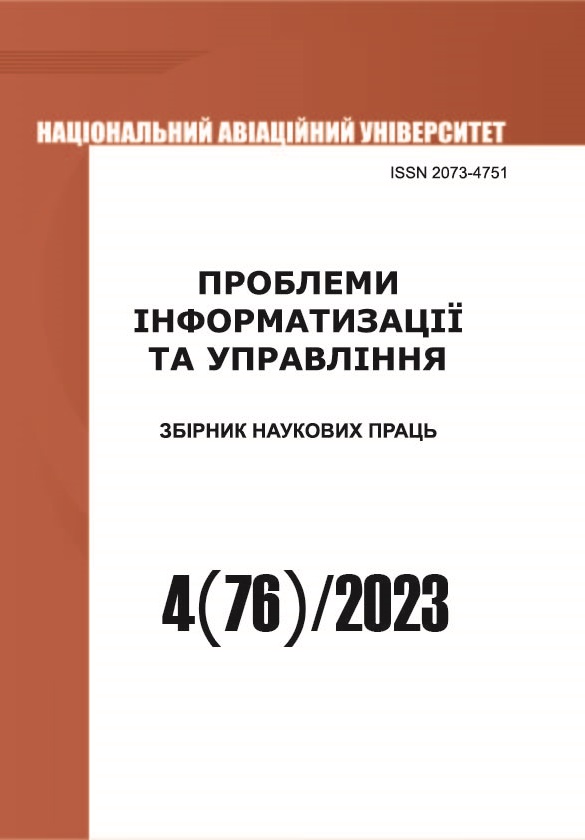Метод безпечного розподіленого обчислення модулярної експоненти для прискорення реалізації механізмів захисту даних в ІoТ
DOI:
https://doi.org/10.18372/2073-4751.76.18243Ключові слова:
модулярне експоненціювання, захищені обчислення в хмарі, безпека IoT, гомоморфне шифрування, цифровий підписАнотація
У статті пропонується метод захищеного модулярного експоненціювання на термінальних платформах IoT з залученням хмарних обчислень для швидкої реалізації алгоритмів криптографічного захисту з відкритим ключем. Метод реалізує новий принцип розподілення обчислень між термінальною та віддаленими платформами при реалізації модулярного експоненціювання – на рівні обробки кожного окремого біту коду експоненти. Це дозволяє втроє зменшити обчислювальне навантаження на термінальну платформу і, відповідно, втроє прискорити обчислення базової операції криптографії з відкритим ключем в порівнянні з відомими методами розподіленого обчислення модулярної експоненти.
Посилання
Elgazzar K., et al. Revisiting the internet of things: New trends, opportunities and grand challenges. Frontiers in Internet of Things. 2022. Vol. 1. P. 1–18.
Kumar S., Tiwari P., Zymbler M. Internet of Things is a revolutionary approach for future technology enhancement: a review. Journal of Big Data. 2019. No. 6. 111.
Jurcut A.D., Ranaweera P., Xu L. Introduction to IoT Security. IoT Security: Advances in Authentication. John Wiley & Sons Ltd, 2020. P. 27–64.
Unal D., Al-Ali A., Catak F.O., Hammoudeh M. A secure and efficient Internet of Things cloud encryption scheme with forensics investigation compatibility based on identity-based encryption. Future Generation Computer Systems. 2021. V. 125. P. 433–445.
Bardis N. Secure, Green Implementation of Modular Arithmetic Operations for IoT and Cloud Applications. Green IT Engineering: Components, Networks and System Implementation. Springer, 2017. P. 43–64.
Meneghello F., Calore M., Zucchetto D., Polese M., Zalella A. IoT: Internet of Threats? A Survey of Practical Security Vulnerabilities in Real IoT Devices. IEEE Internet of Things Journal. 2019. V. 6. No. 5. P. 8182–8201.
Alfred Menezes, Paul C. van Oorschot, Scott A. Vanstone. Handbook of Applied Cryptography. CRC Press, 2001. 780 p.
Markovskyi O., Bardis N., Doukas N., Kirilenko S. Secure Modular Exponentiation in Cloud Systems. Proceedings of The Congress on Information Technology, Computational and Experimental Physics (CITCEP 2015) / Krakow, Poland, 2015. P. 266–269.
Jose Alberto de Jesus Borges, Haidukevych Oleksandra, Mirataei Alireza, Nikos Doukas. A Secure Cloud Computing Method for Rapid Implementation of Cryptographic Data Protection in IoT. Proceeding of The 13th IEEE International Conference on Dependable Systems, Services and Technologies, DESSERT’2023 / Athens, Greece, 2023. P. 50–53.
##submission.downloads##
Опубліковано
Номер
Розділ
Ліцензія
Автори, які публікуються у цьому журналі, погоджуються з наступними умовами:- Автори залишають за собою право на авторство своєї роботи та передають журналу право першої публікації цієї роботи на умовах ліцензії Creative Commons Attribution License, котра дозволяє іншим особам вільно розповсюджувати опубліковану роботу з обов'язковим посиланням на авторів оригінальної роботи та першу публікацію роботи у цьому журналі.
- Автори мають право укладати самостійні додаткові угоди щодо неексклюзивного розповсюдження роботи у тому вигляді, в якому вона була опублікована цим журналом (наприклад, розміщувати роботу в електронному сховищі установи або публікувати у складі монографії), за умови збереження посилання на першу публікацію роботи у цьому журналі.
- Політика журналу дозволяє і заохочує розміщення авторами в мережі Інтернет (наприклад, у сховищах установ або на особистих веб-сайтах) рукопису роботи, як до подання цього рукопису до редакції, так і під час його редакційного опрацювання, оскільки це сприяє виникненню продуктивної наукової дискусії та позитивно позначається на оперативності та динаміці цитування опублікованої роботи (див. The Effect of Open Access).


